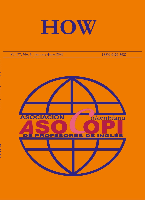
How-A Colombian Journal for Teachers of English
Scope & Guideline
Bridging Theory and Practice in Language Education.
Introduction
Aims and Scopes
- Promoting Innovative Pedagogies:
The journal highlights research on innovative teaching methodologies, such as project-based learning, task-based instruction, and the use of technology in language teaching, aiming to enhance communicative competence among learners. - Addressing Cultural and Emotional Dimensions:
Articles often explore the interplay between culture, identity, and language learning, emphasizing the importance of emotional aspects in teaching practices and learner experiences. - Teacher Development and Professional Growth:
A significant focus is placed on the professional development needs of English language teachers, including their perceptions, identities, and narratives, to foster reflective teaching practices. - Critical and Interdisciplinary Approaches:
The journal encourages critical perspectives on language education, integrating issues of social justice, equity, and identity, thereby contributing to a more holistic view of language teaching in diverse contexts. - Research on Learner Experiences and Needs:
Research articles often examine the experiences and needs of EFL learners in Colombia, providing insights into effective assessment practices, learner motivation, and engagement in language learning.
Trending and Emerging
- Integration of Technology in Language Learning:
Recent publications highlight the increasing use of technology, such as digital tools and online platforms, to enhance language learning experiences and promote learner engagement. - Focus on Emotional Well-being in Language Education:
There is a growing emphasis on addressing emotional aspects of language learning, recognizing the importance of well-being and mental health in the educational process. - Culturally Responsive Teaching:
Emerging themes focus on culturally responsive teaching practices, exploring how cultural contexts influence language learning and teaching, and the importance of integrating local narratives in the curriculum. - Narrative and Reflective Practices:
The journal is increasingly featuring narratives from teachers and learners, promoting reflective practices that encourage deeper understanding of personal and professional identities in language education. - Interdisciplinary Approaches to Language Teaching:
There is a trend towards interdisciplinary research that intersects language education with other fields, such as social justice, gender studies, and identity politics, enriching the discourse around ELT.
Declining or Waning
- Traditional Language Assessment Methods:
There has been a noticeable decrease in articles focusing on conventional language assessment methods, as the journal increasingly prioritizes innovative and learner-centered assessment approaches. - General Language Teaching Methodologies:
The journal has moved away from broad discussions on general language teaching methodologies, instead favoring more specific and contextually relevant teaching practices that address local needs. - Static Views on Language Policy:
Research on static language policies and their implications for ELT has diminished, giving way to more dynamic discussions that consider the evolving nature of language education in a globalized context. - Focus on Non-Critical Pedagogical Approaches:
There is less emphasis on non-critical or traditional pedagogical approaches, as the journal increasingly aligns itself with critical pedagogy, encouraging dialogue around power dynamics and social issues in language education. - Limited Exploration of Non-ELT Subjects:
The exploration of non-ELT subjects in the context of language teaching has waned, as the journal now concentrates more on the intersection of language and culture, identity, and emotional factors in the learning process.
Similar Journals
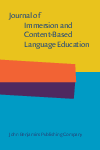
Journal of Immersion and Content-Based Language Education
Bridging Theory and Practice in Linguistic EducationJournal of Immersion and Content-Based Language Education, published by JOHN BENJAMINS PUBLISHING CO, is a leading academic journal dedicated to the fascinating intersection of language education and immersive learning experiences. With its ISSN 2212-8433 and E-ISSN 2212-8441, the journal has carved a prominent niche in both the Education and Linguistics fields, earning a Q2 ranking in Education and a prestigious Q1 ranking in Linguistics, as noted in 2023. Situated in the Netherlands, this journal caters to a global audience, offering access to cutting-edge research and methodologies in content-based language instruction. Committed to fostering scholarly dialogue, the Journal of Immersion and Content-Based Language Education empowers researchers, educators, and students alike to explore innovative practices and theoretical frameworks. With a Scopus ranking reflecting its impact in the field—#196/1088 in Language and Linguistics at the 82nd percentile and #807/1543 in Education—this journal is a vital resource for those committed to enhancing linguistic education through immersive methodologies.
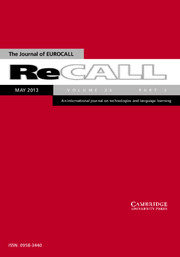
ReCALL
Exploring the Future of Language Learning through TechnologyReCALL is a prestigious academic journal published by Cambridge University Press, focusing on the rapidly evolving interplay between technology and language learning. Established in 1989, this quarterly journal holds a distinguished Q1 ranking across multiple categories including Computer Science Applications, Education, and Linguistics and Language, reflecting its commitment to the highest standards of scholarly excellence. With an impressive Scopus ranking that places it in the top percentiles across its fields, ReCALL serves as a vital resource for researchers, educators, and professionals interested in the integration of technology in language education. It features cutting-edge research articles, innovative methodological approaches, and comprehensive reviews that offer insights into the current trends and future directions of language learning, teaching, and assessment. By providing a platform for penetrating inquiry and dialogue, ReCALL significantly enhances the discourse surrounding computer-assisted language learning (CALL) and its influence on educational practices worldwide.

MODERN LANGUAGE JOURNAL
Fostering Insights in Linguistics and Language MethodologiesThe MODERN LANGUAGE JOURNAL, published by WILEY, stands as a premier academic resource in the field of linguistics and language studies. With its strong legacy dating back to 1916, this journal has evolved to address contemporary issues and trends in language learning, teaching, and research. It holds a prestigious Q1 ranking in both Linguistics and Language categories as of 2023, reflecting its high impact and relevance in scholarly discourse, supported by notable Scopus rankings that place it in the top percentiles of its field. The journal serves as an essential conduit for researchers, educators, and students seeking to contribute to and stay abreast of advancements in language education and linguistic theory. Although it does not currently offer open access options, the journal remains committed to disseminating significant findings that inspire innovative methodologies within the realm of modern languages.

TESL Canada Journal
Bridging Theory and Practice in Language LearningTESL Canada Journal, published by TESL Canada, serves as a vital resource for researchers, educators, and practitioners in the field of English as a Second Language (ESL) and applied linguistics. With its commitment to advancing scholarship and best practices in language education, this esteemed journal fosters a platform for the dissemination of high-quality research and innovative pedagogical approaches. Although it operates without open access, its comprehensive articles and reviews offer valuable insights into current trends and challenges faced by ESL educators across Canada and internationally. The journal is dedicated to promoting a deeper understanding of language acquisition processes and instructional methodologies, contributing significantly to the professional development of its readership. Located in Burnaby, Canada, the journal aims to bridge the gap between theory and practice, making it an indispensable source for educators and researchers looking to enhance their expertise in ESL education.

Porta Linguarum
Connecting theory and practice in language education.Porta Linguarum, published by UNIV GRANADA in Spain, is a pioneering journal dedicated to the fields of linguistics and language studies, with a dual focus on the educational implications and applications within these disciplines. Launched in 2008 and continuing its impactful contributions into 2024, the journal is recognized for its rigorous peer-reviewed articles that address contemporary language issues, pedagogical approaches, and linguistic research, evidenced by its notable rankings in the 2023 Scopus metrics. Porta Linguarum holds a distinguished Q1 classification in Linguistics and Language, alongside a respectable Q3 placement in Education, marking it as a valuable resource for academics and practitioners alike. With an impressive ranking of 231 out of 1088 in the Arts and Humanities category and a strong 78th percentile ranking for Language and Linguistics, this journal facilitates the exchange of innovative ideas and promotes scholarly discourse. Although currently not adopting an open access model, it remains an essential platform for advancing knowledge in linguistics and education.

Malaysian Journal of ELT Research
Shaping the Future of English Language Teaching TogetherMalaysian Journal of ELT Research is a pioneering platform dedicated to advancing the field of English Language Teaching (ELT) research, published by the Malaysian English Language Teaching Association. With an ISSN of 1511-8002, this journal serves as a vital resource for educators, researchers, and practitioners who are passionate about enhancing English language instruction in Malaysia and beyond. Although specific impact factors are currently not available, the journal's commitment to quality research is evident in its rigorous peer-review process, fostering innovative studies that address contemporary challenges in ELT. The journal embraces a wide range of topics within English language pedagogy, including but not limited to curriculum development, teaching methodologies, and language assessment. It provides an open-access model, ensuring that valuable research insights are readily accessible to a global audience. With its strategic focus on enriching English language education, the Malaysian Journal of ELT Research stands as an important contributor to scholarly discourse in the realm of language teaching and learning.

Language Learning Journal
Pioneering insights into the art and science of language learning.Welcome to the Language Learning Journal, a premier resource for researchers, educators, and linguists alike, published by Routledge Journals, Taylor & Francis Ltd. With a proud history dating back to 1990 and commitment to advancing the exploration of language acquisition, this esteemed journal boasts an impressive impact factor within Q1 rankings across both the Education and Linguistics and Language categories. Ranked #40 in Language and Linguistics and achieving a 96th percentile in the Arts and Humanities, the journal serves as a crucial platform for disseminating cutting-edge research, innovative methodologies, and impactful discussions in the field of language learning. Although currently not offered as an open access publication, the depth and quality of content ensure significant contributions to the body of knowledge for professionals and scholars. With its global reach, the Language Learning Journal is dedicated to fostering the development and understanding of language learning processes, enabling readers to stay informed about the latest trends and findings through rigorous peer-reviewed articles.
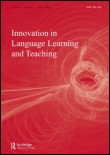
Innovation in Language Learning and Teaching
Fostering Excellence in Language Learning through Innovation.Innovation in Language Learning and Teaching is a premier peer-reviewed journal published by Routledge Journals, Taylor & Francis Ltd, focusing on the intersection of innovative practices in language education and teaching methodologies. With a notable impact factor reflected in its recent placement in the Q1 quartile for both Education and Linguistics and Language categories, this journal serves as a crucial resource for scholars and practitioners aiming to enhance pedagogical approaches and improve learning outcomes in language education. Spanning from 2009 to 2024, it showcases cutting-edge research that addresses contemporary challenges in the field, facilitating a deeper understanding of language acquisition, pedagogy, and curriculum development. The journal is indexed in Scopus, demonstrating its significant contribution to the academic community, with impressive ranks in both the Arts and Humanities as well as the Social Sciences categories. Although it follows a traditional subscription model, the journal is committed to disseminating high-quality research that fosters collaboration and discussion among researchers, educators, and students dedicated to advancing language learning and teaching practices.

Unterrichtspraxis-Teaching German
Empowering Educators to Transform German Language LearningUnterrichtspraxis-Teaching German is a prominent academic journal published by WILEY, dedicated to advancing the field of German language teaching and pedagogy. With its ISSN 0042-062X and E-ISSN 1756-1221, this journal serves as a vital resource for educators, researchers, and students working to improve methodologies and outcomes in the teaching of German. Although it does not currently offer Open Access options, [[the journal remains committed to high-quality scholarly contributions that foster innovative practices and theoretical advancements in language education. Based in Hoboken, NJ, the journal has established a reputation for its rigorous peer-review process and relevance across multilingual education contexts. In a world where language skills are increasingly important, Unterrichtspraxis-Teaching German plays a crucial role in promoting effective teaching strategies and contributing to the broader discourse surrounding language acquisition and pedagogy.
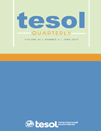
TESOL QUARTERLY
Empowering Educators with Innovative InsightsTESOL Quarterly, published by Wiley, is a premier academic journal in the fields of Education and Linguistics, noted for its significant contributions to the study of Teaching English to Speakers of Other Languages. Since its inception in 1981, this journal has established itself as a vital platform for researchers and educators, emphasizing empirical studies, innovative teaching practices, and critical reviews that inform policy and pedagogy. With an impressive impact factor, it consistently ranks in the Q1 Quartile across multiple categories in both Education and Linguistics, highlighting its influence and reach within the scholarly community. The journal boasts strong Scopus rankings, placing it in the top 96th percentile among related publications, further affirming its essential role in disseminating cutting-edge research. Although it does not offer open access, TESOL Quarterly remains dedicated to promoting high-quality scholarship that advances the understanding of language education practices globally.